TGF-β/Smad Signaling
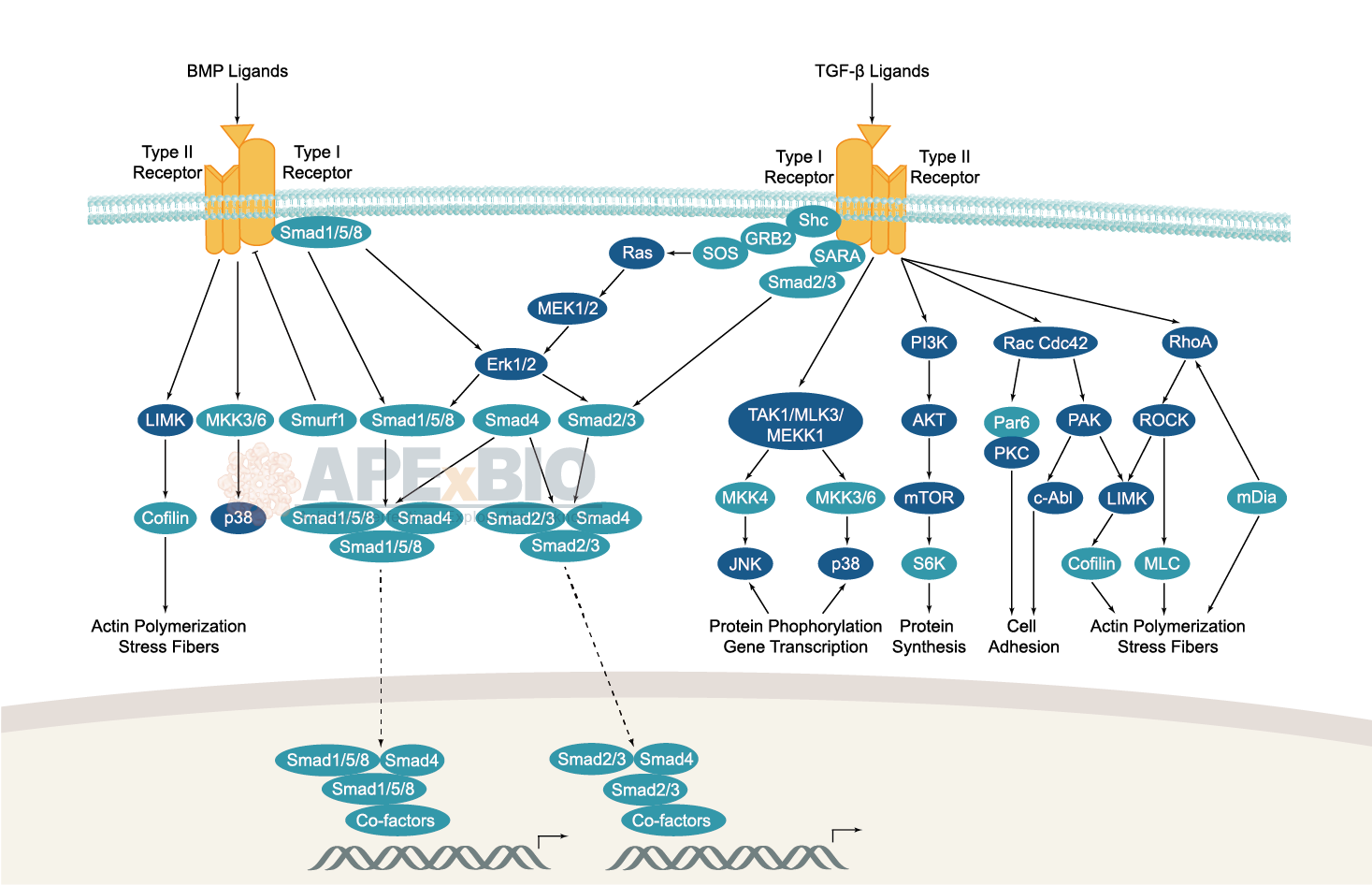

The TGF-β family is generally classified into two sub-families, TGF-β ligands, and bone morphogenic protein (BMP) ligands. In canonical signaling, receptor activation lead to phosphorylation of a group of transcription factors called Smads. TGF-β ligands bind to type II receptors (TGF-β II) which recruit and phosphorylate type I receptor (TGF-β I) on serine/threonine residues. The TGF-β I then recruits and phosphorylates a receptor regulated Smad (R-Smad). The R-Smad binds to the common Smad (Co-Smad) and forms a heterodimeric complex. This complex then translocates into the cell nucleus where it binds with nuclear co-factors to regulate the transcription of various target genes. Dysregulation of TGF-β/Smad signaling pathway is associated with a number of pathological conditions including fibrosis, cancer, immunodeficiency, diabetes and cardiovascular diseases etc.
-
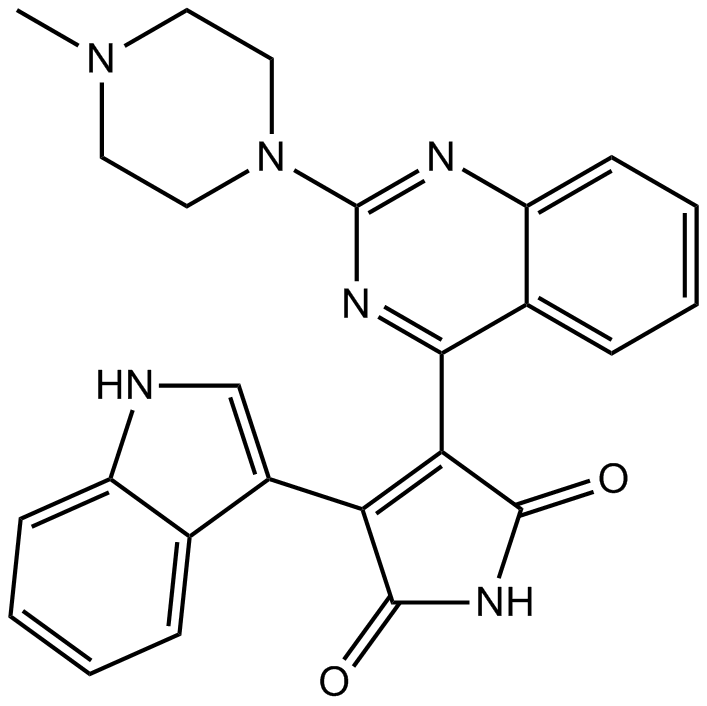 A8525 Sotrastaurin (AEB071)Target: PKCSummary: PKC inhibitor
A8525 Sotrastaurin (AEB071)Target: PKCSummary: PKC inhibitor -
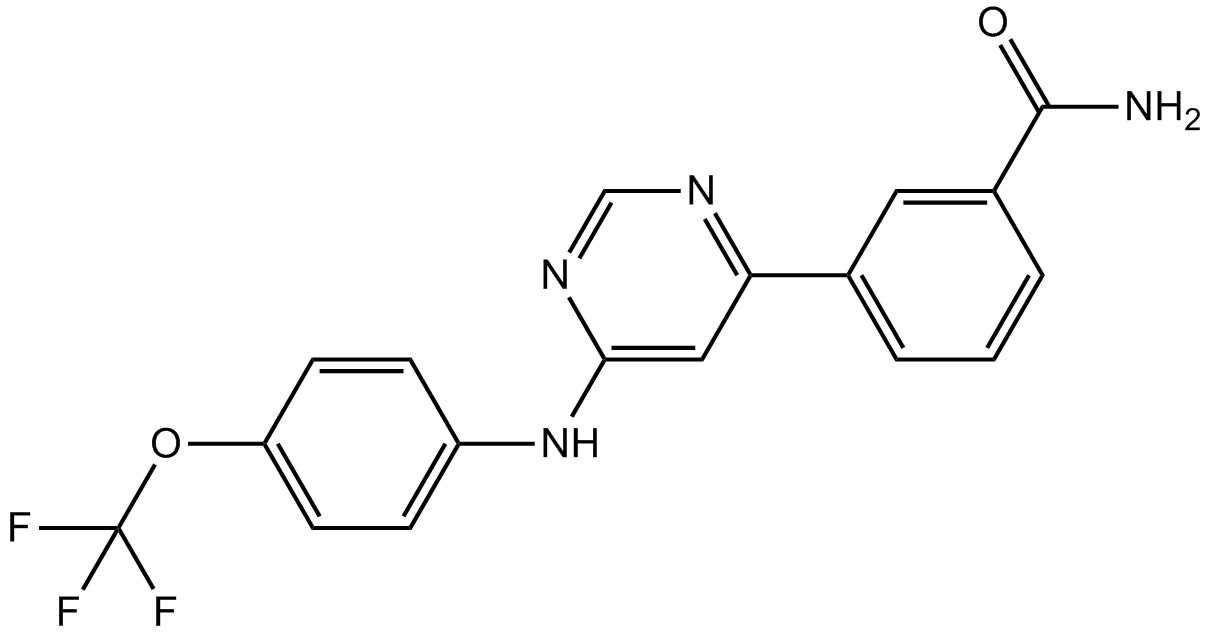 A8603 GNF 2Summary: Bcr-Abl inhibitor
A8603 GNF 2Summary: Bcr-Abl inhibitor -
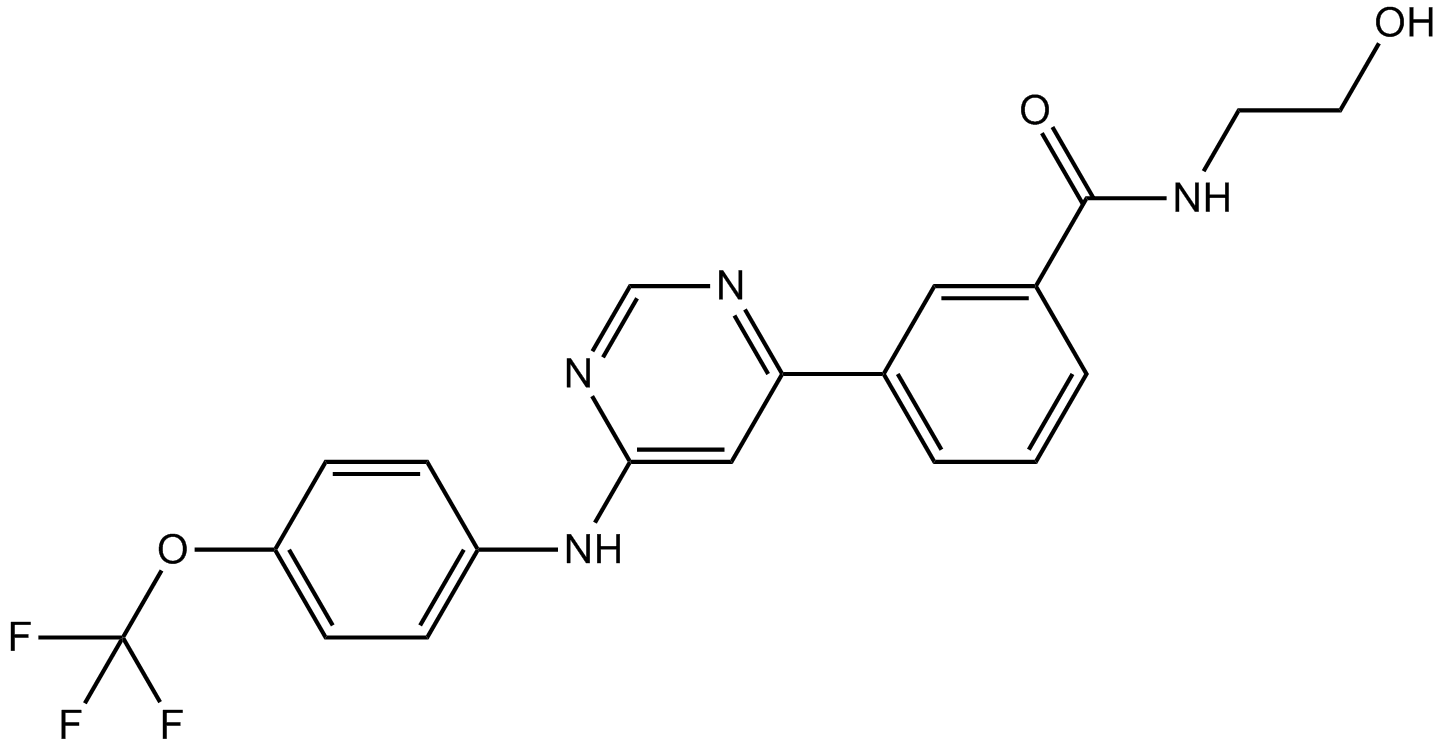 A8604 GNF 5Target: Bcr-AblSummary: Bcr-Abl inhibitor
A8604 GNF 5Target: Bcr-AblSummary: Bcr-Abl inhibitor -
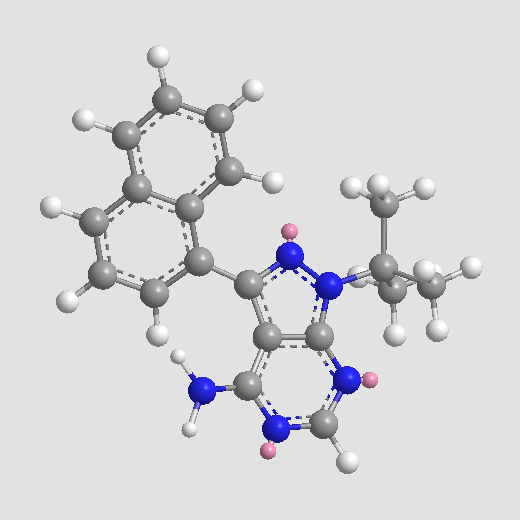 A8605 1-Naphthyl PP1Summary: Src family kinases inhibitor
A8605 1-Naphthyl PP1Summary: Src family kinases inhibitor -
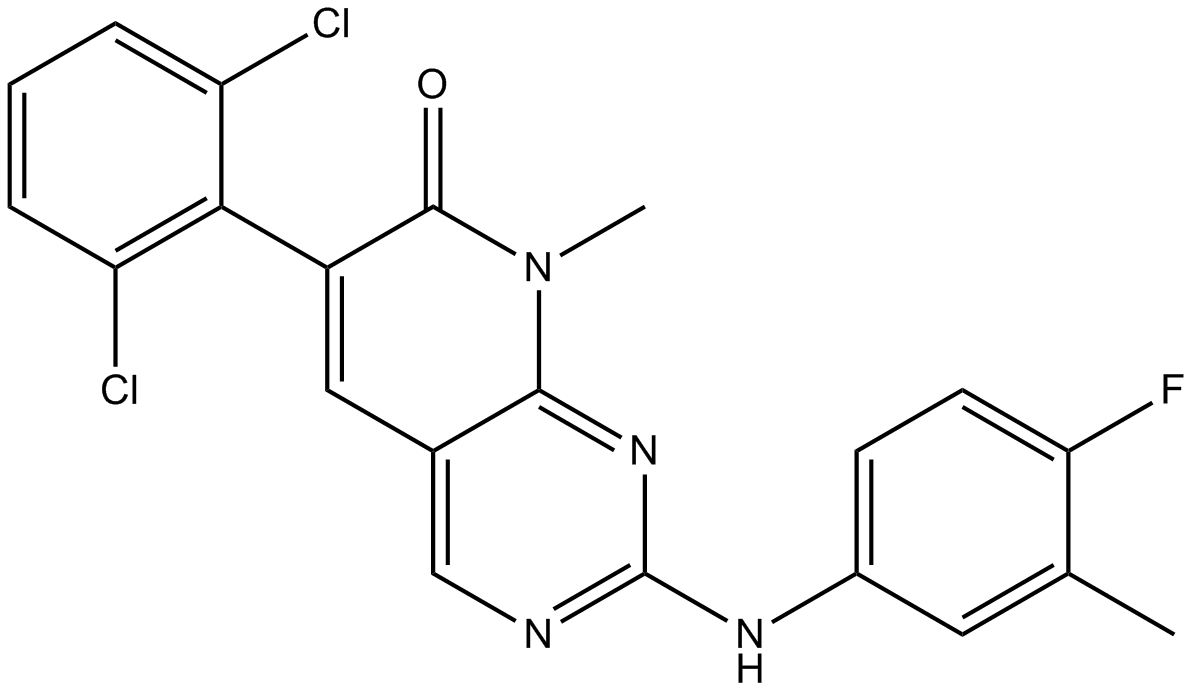 A8606 PD 180970Summary: P210bcr/abl tyrosine kinase inhibitor
A8606 PD 180970Summary: P210bcr/abl tyrosine kinase inhibitor -
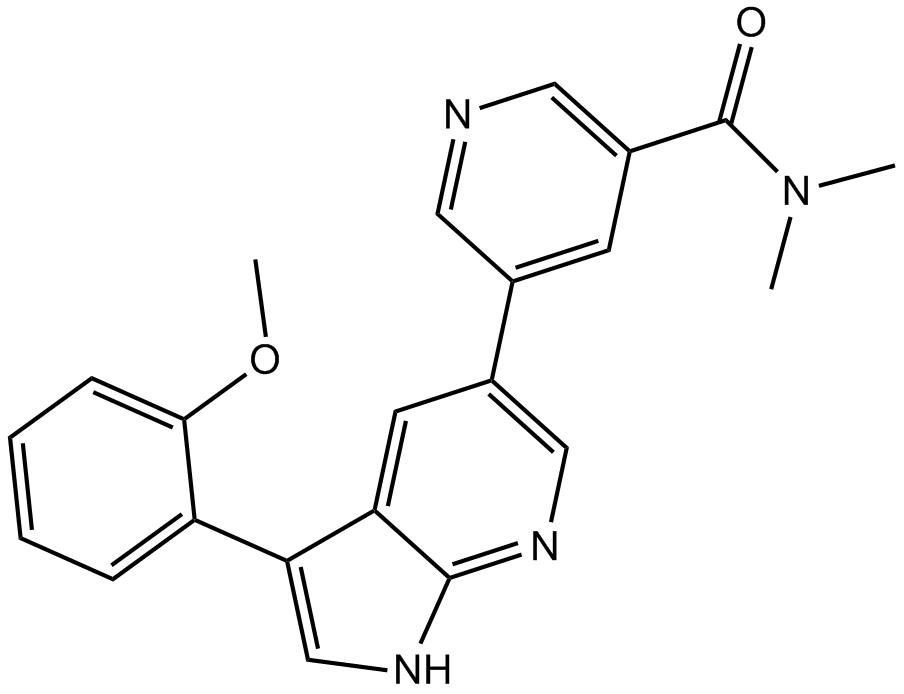 A8607 PPY ATarget: Abl kinasesSummary: Abl kinases inhibitor
A8607 PPY ATarget: Abl kinasesSummary: Abl kinases inhibitor -
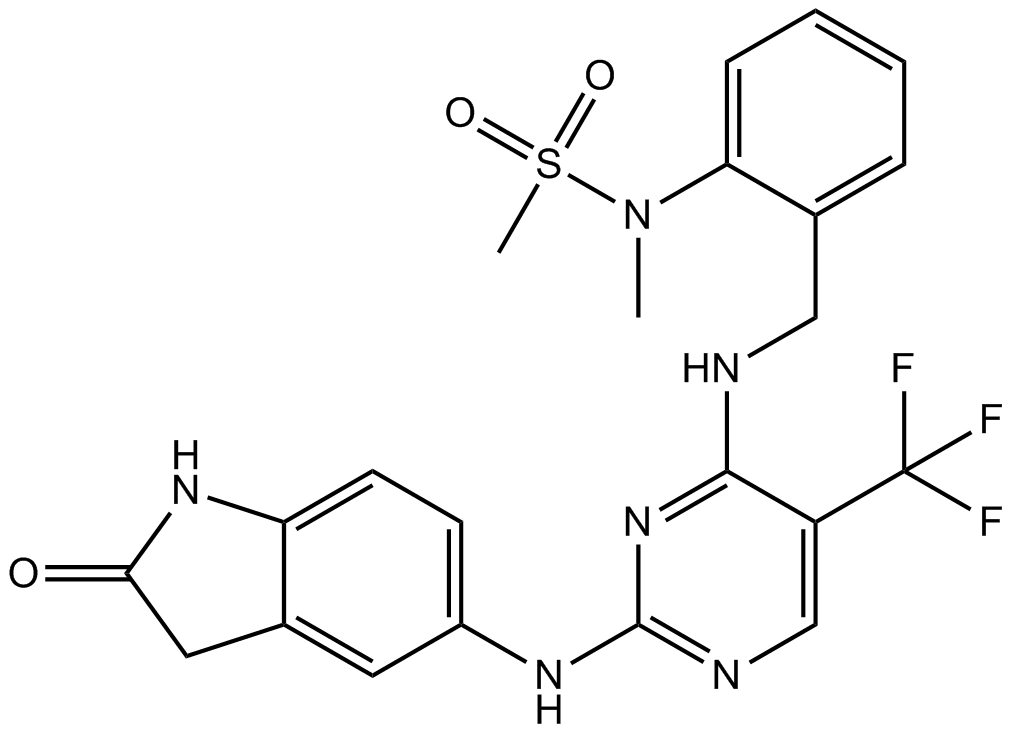 A8692 PF-431396Summary: Pyk2 and FAK inhibitor
A8692 PF-431396Summary: Pyk2 and FAK inhibitor -
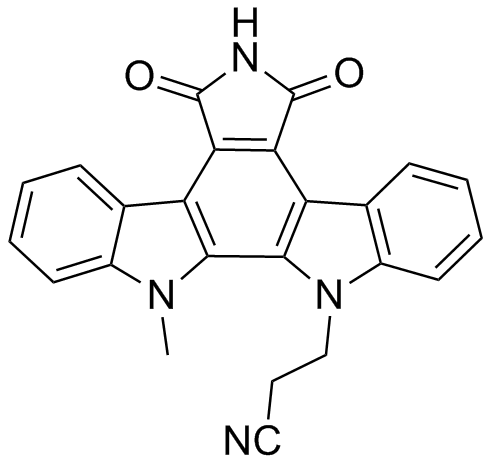 A8801 ICP 103Summary: Protein kinase inhibitor
A8801 ICP 103Summary: Protein kinase inhibitor -
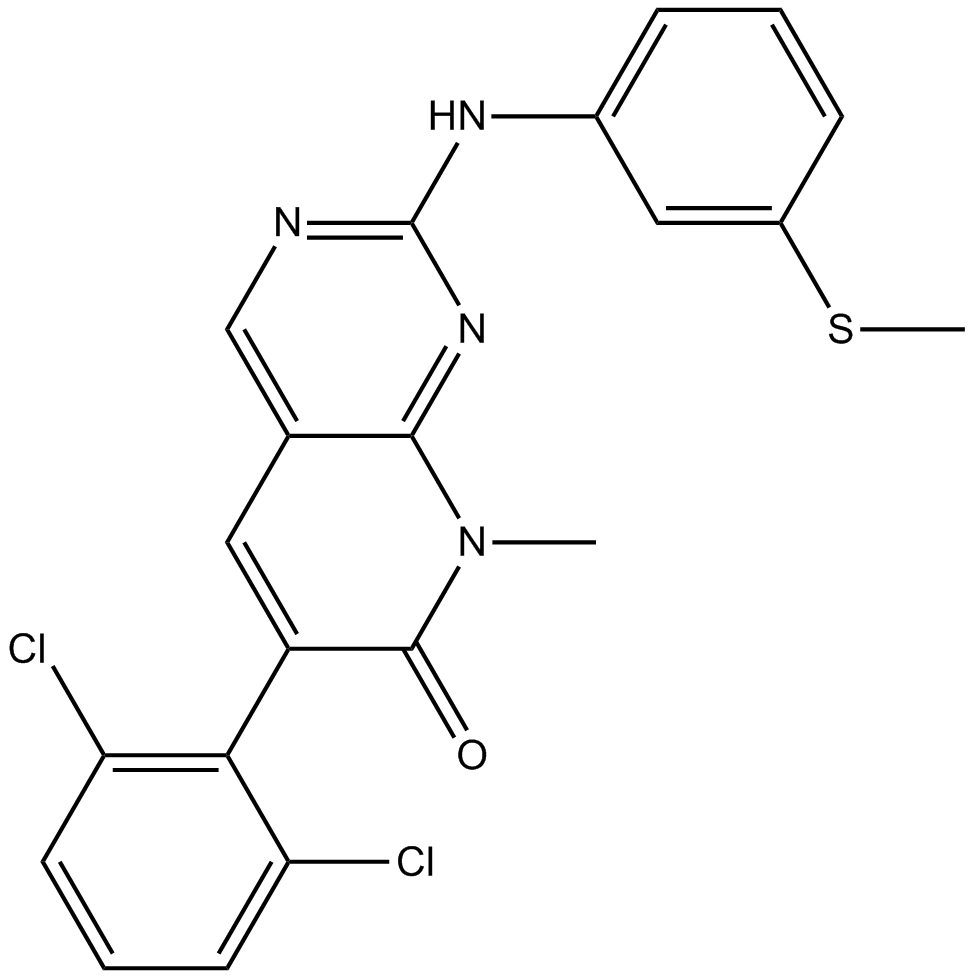 A8812 PD173955Target: Bcr-Abl|SrcSummary: Dual Src/Abl kinase inhibitor, ATP-competitive,
A8812 PD173955Target: Bcr-Abl|SrcSummary: Dual Src/Abl kinase inhibitor, ATP-competitive, -
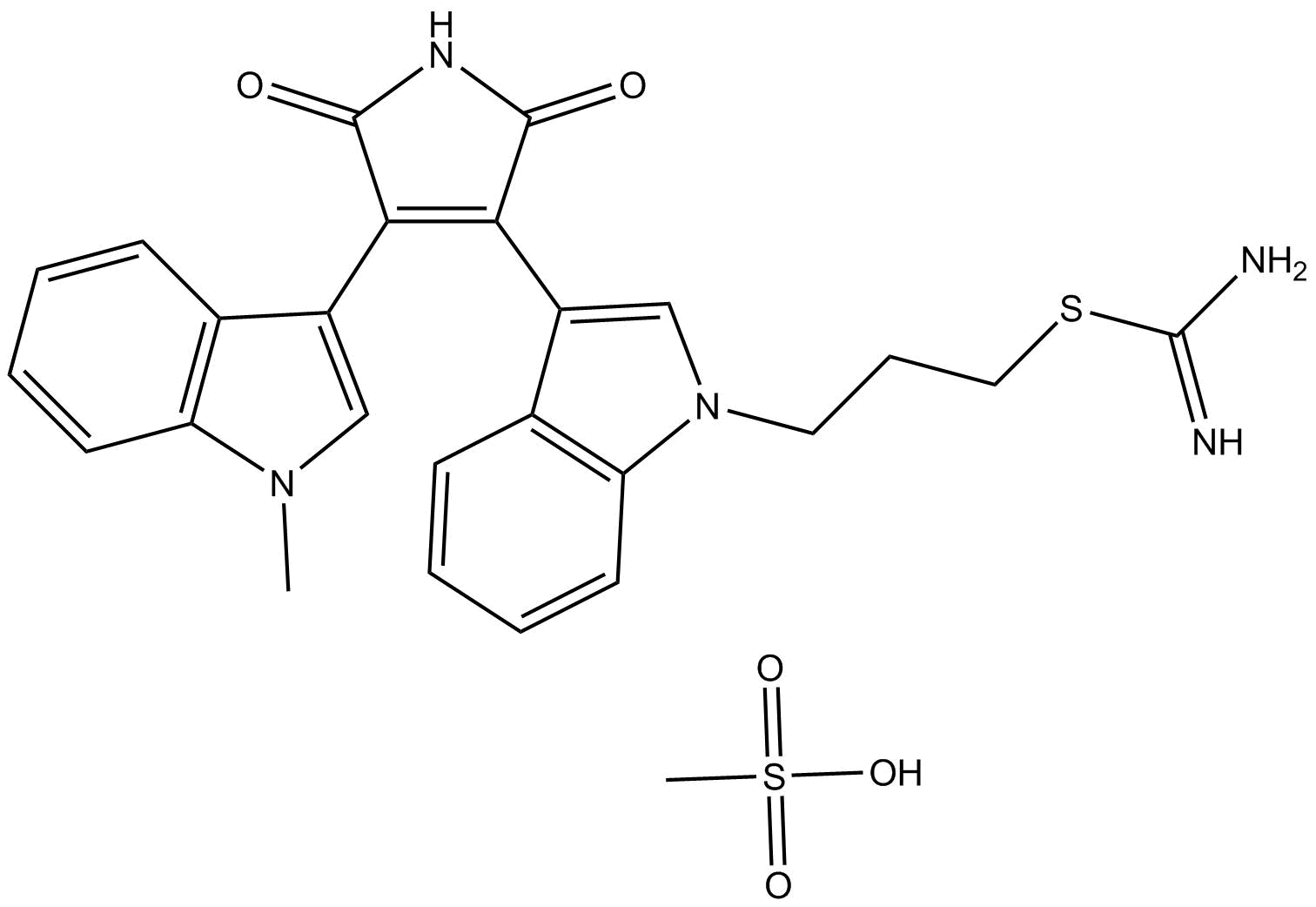 B2192 Ro 31-8220 Mesylate1 CitationTarget: PKCSummary: Pan-PKC inhibitor
B2192 Ro 31-8220 Mesylate1 CitationTarget: PKCSummary: Pan-PKC inhibitor


